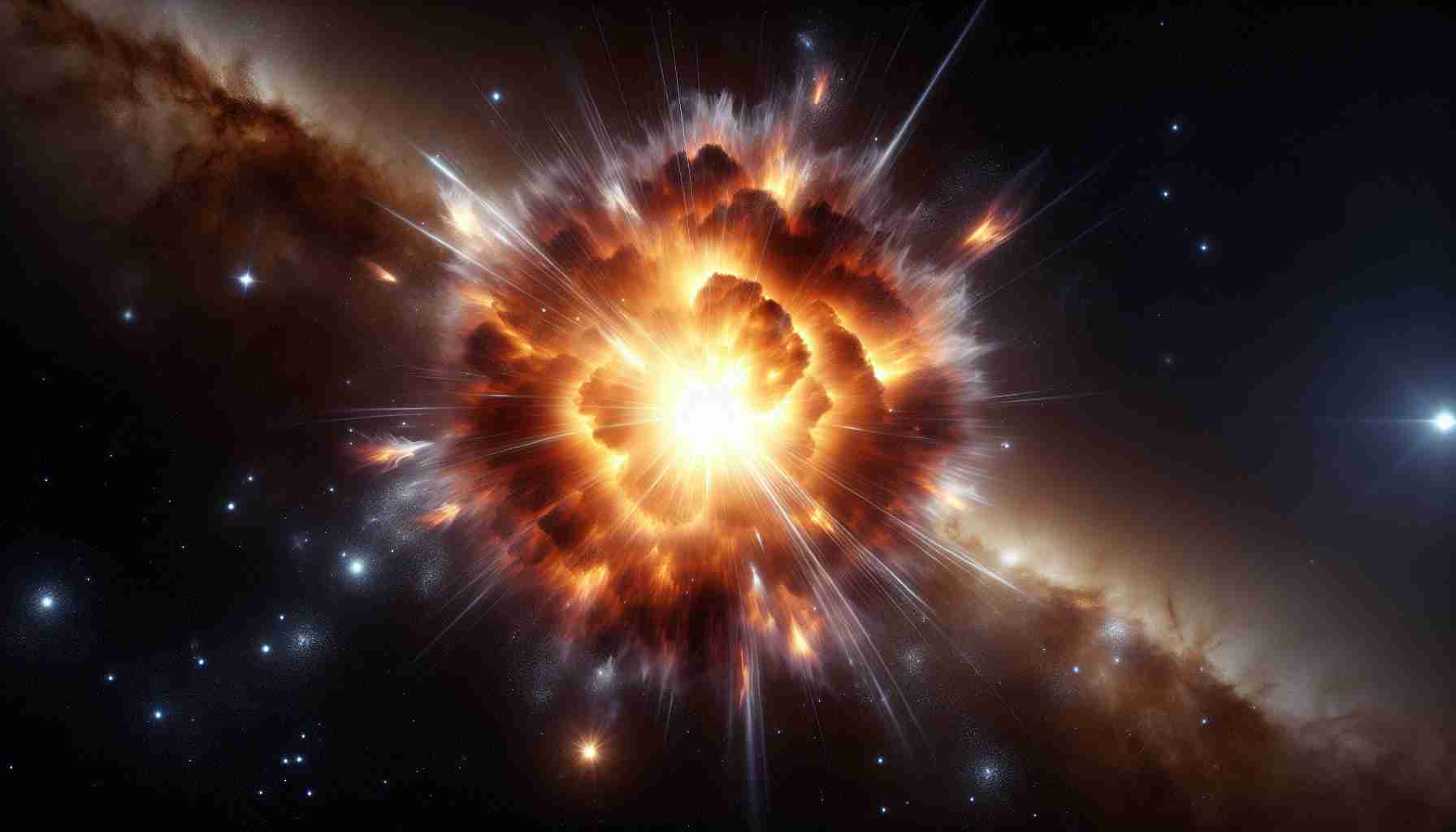Understanding Supernovae Through Revolutionary Imagery
Recent advancements in astronomical observation have illuminated the mysterious aftermath of supernovae. The James Webb Space Telescope (JWST) has captured unprecedented imagery of Cassiopeia A, a young supernova remnant that erupted approximately 350 years ago. This stellar explosion, pivotal to our understanding of the universe, was observed during an era when Isaac Newton was redefining physics.
With its powerful capabilities, JWST provides a detailed view that surpasses earlier observations by instruments like the Hubble Space Telescope. The pristine images depict intricate gas structures ejected during the blast, presenting a frozen snapshot of the violent death of a star. Researchers, including experts from Dartmouth College, have emphasized the importance of this observation in answering long-standing questions about stellar explosions.
One remarkable discovery within the images features an intriguing layer of gas, dubbed the “Green Monster.” This gas, believed to have been expelled prior to the stellar explosion, reveals critical information about the star’s final moments. The structure and composition of this material are vital for understanding how supernova remnants interact with surrounding cosmic materials.
Astrophysicists suggest that deciphering the mechanics of supernovae could shed light on the origins of elements essential for life on Earth. As these explosions scatter materials across the universe, they play a key role in the cosmic cycle of star and planet formation. The ongoing study of Cassiopeia A holds the promise of deepening our understanding of the celestial processes that have shaped our existence.
The Broader Implications of Supernova Research
As we unravel the secrets of supernovae through groundbreaking imagery, the implications extend far beyond the realm of astrophysics; they resonate deeply throughout society, culture, and the global economy. Understanding these cosmic phenomena not only enhances our knowledge of the universe but also inspires innovations in technology and education. For instance, the advanced imaging techniques used by the James Webb Space Telescope (JWST) could propel advancements in remote sensing technologies that impact fields such as climate science, agriculture, and urban planning.
Furthermore, the study of supernovae has significant cultural repercussions. The narrative of the universe’s evolution captivates the human imagination, fostering a sense of connection to our cosmic environment. As we learn about the processes that forge the very elements we are made of, it encourages a philosophical contemplation of our place in an ever-expanding universe. This sense of wonder can drive public interest in science, technology, engineering, and mathematics (STEM) education, crucial for nurturing future generations of inventors and thinkers.
From an environmental perspective, supernova studies can inform our understanding of the lifecycle of stars and the materials that scatter across galaxies. As we face climate change, recognizing these cosmic interactions helps underscore the interconnectedness of all matter in the universe. The materials dispersed by supernovae, including carbon and nitrogen, play pivotal roles in the chemical processes that enable life to thrive on Earth.
Looking ahead, the future of supernova research promises to unveil even more insights. As technology advances, the potential to visualize and understand these phenomena will only grow, cementing the relevance of astrophysics in addressing both immediate human concerns and grand existential questions. The long-term significance of comprehending supernovae lies not just in scientific achievement but in fostering a global society that values curiosity and collaboration—qualities essential for facing the challenges of tomorrow.
The Cosmic Symphony: How the James Webb Space Telescope Redefines Our Understanding of Supernovae
Understanding Supernovae Through Revolutionary Imagery
Recent breakthroughs in astronomical imaging are transforming our comprehension of the universe, particularly the aftermath of supernovae. The James Webb Space Telescope (JWST) has delivered extraordinary visuals of Cassiopeia A, a supernova remnant that notably erupted about 350 years ago during an era when groundbreaking scientific advances were taking place under the likes of Isaac Newton.
Advancements in Imaging Technology
The JWST utilizes advanced infrared capabilities that allow it to capture images with remarkable clarity and detail. This technology surpasses that of previous telescopes, including the Hubble Space Telescope, and offers a more profound insight into the remnants of supernova explosions. Researchers have emphasized that the detailed imagery of gas structures produced during these cataclysmic events is crucial for unlocking the mysteries surrounding stellar life cycles.
Unveiling the “Green Monster”
Among the stunning discoveries made from JWST’s observations is a unique layer of gas known as the “Green Monster.” This gas, believed to have been expelled before the actual supernova explosion, provides valuable clues about the final stages of the star’s life. Understanding the composition and distribution of this material aids scientists in exploring how supernova remnants interact with the interstellar medium, which is crucial for studying cosmic evolution.
The Importance of Supernovae
Astrophysicists are keen to study supernova mechanisms because these stellar explosions are integral to the cosmic cycle of element production. They are responsible for distributing essential elements, such as carbon and oxygen, that are crucial for life. This continual recycling of materials is key to planet formation and the existence of life as we know it.
Pros and Cons of JWST’s Observations
Pros:
– High Resolution: JWST provides high-resolution images that reveal intricate details.
– Greater Insights: Allows for deeper understanding of the lifecycle of stars.
– Revolutionary Discoveries: Facilitates the discovery of phenomena like the “Green Monster.”
Cons:
– Costly Technology: The development and launch of JWST represent a significant financial investment.
– Technical Limitations: While powerful, the telescope’s observations are limited to infrared wavelengths, making it less versatile for other types of celestial imaging.
FAQs about James Webb Space Telescope and Supernovae
Q: What is a supernova?
A: A supernova is a massive explosion that occurs at the end of a star’s life cycle, resulting in the ejection of its outer layers.
Q: How does JWST differ from Hubble?
A: The JWST is designed to observe in infrared wavelengths, allowing it to see through dust clouds and capture cooler cosmic objects, whereas Hubble primarily observes in visible and ultraviolet light.
Q: Why study supernova remnant Cassiopeia A?
A: Cassiopeia A is a relatively young supernova remnant that provides valuable insights into the processes governing stellar explosions and their effects on the universe.
Future Implications and Insights
The continued study of supernovae allows astronomers to grasp the broader cosmic context of these powerful events. As the JWST collects more data, it is expected to yield groundbreaking insights that could reshape our understanding of not only supernovae but also the formation and evolution of galaxies and the universe itself.
For those looking to dive deeper into the cosmos, visit NASA’s official website to explore more about the James Webb Space Telescope and its findings.














